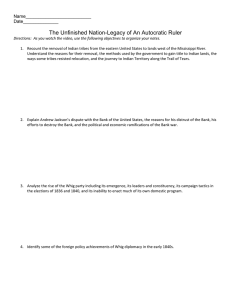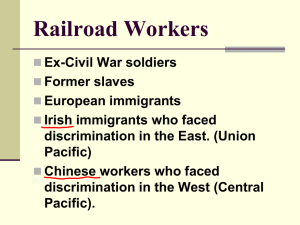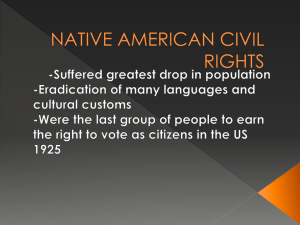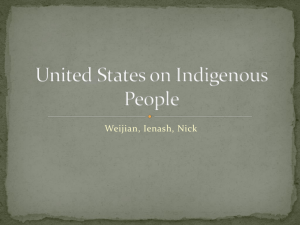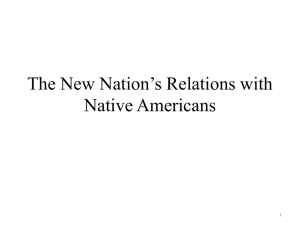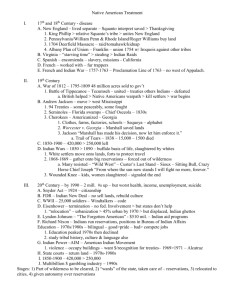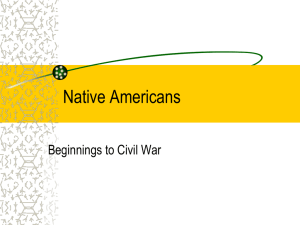The American West An Overview: 1860-1900
advertisement
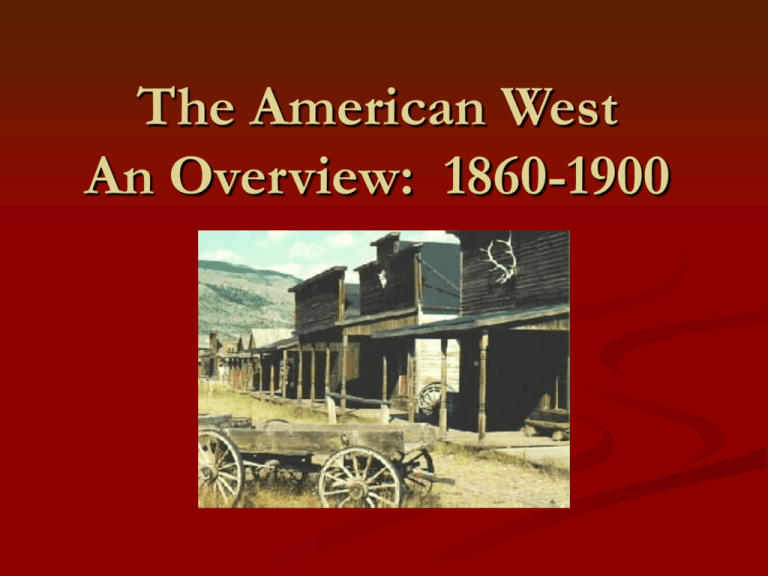
The American West An Overview: 1860-1900 Practice Essay “The American West was a land of opportunity for Americans in the late 1800s.” To what extent do you agree with this statement? Theme 1: The American west was a land of hardship and opportunity. Theme 2: Western life was largely shaped by geography. Theme 3: Western expansion continued to bring American settlers into conflict with American Indians. 4 main economic opportunities in the West Farming Ranching Mining Railroad construction Land Grants to Railroads Farming What does a successful farmer need? Farming What does a successful farmer need? Land with tillable soil Adequate rainfall or irrigation Access to machinery and supplies A way to transport goods to market A market for the goods Opportunities Available Land Sources: Homestead Act (from gov’t) Sales (from other land owners) Hardship Thick sod Lack of rainfall/water Social isolation Debt Low crop prices High freight charges Extreme weather Crop-eating Insects The “Soddie” Ranching Opportunities Ranching is possible in places that couldn’t support other types of farming Markets existed for beef, wool, etc. Hardships Livestock susceptible to disease Farmers opposed open range, put up fences CATTLE TRAILS Mining Opportunities The chance to get rich Hardships Few got rich Large corporations began to takeover the mining business Railroad Work Opportunities Jobs Hardships Dangerous, exhausting work Competition for jobs kept wages low The Impact of Railroads Brought settlers west Allowed westerners to trade with the east Largest landowner in the west Responsible for the creation on many towns Encouraged slaughter of buffalo Accelerated conflict with Native Americans The Indian Wars "It makes little difference, however, where one opens the record of history of the Indians; every page and every year has its dark stain. The story of one tribe is the story of all." --Helen Hunt Jackson Indian Wars: background In reality, Indians had been at war with white "invaders" since about 1493 when Columbus' men had their first clash with Native Americans. Indians in the American west had been isolated from the pressures of U.S. expansion until after the Civil War. Indian Wars: A Shift in Policy When expansion into the American west accelerated and the U.S. government changed its policy to "concentration." This meant moving Indians onto reservations. Some tribes peacefully signed treaties with the US government giving up their lands in exchange for promises of food and other payments. Other tribes fought for their lands. Life on reservations was worsened by corrupt Indian agents. NATIVE AMERICAN TERRITORY IN THE WEST, 1890 Indian Wars Beginning in 1862, the U.S. army began a series of violent conflicts with various Native American tribes. Together, these conflicts are known as the "Indian Wars." The goal of U.S. policy was to force uncooperative tribes onto reservations and to secure western lands for white owners. The End Results All tribes were forced onto Reservations Traditional ways of life for Native Americans were endangered Settlers gained access to the best Western lands The near-extinction of the bison Buffalo were hunted for sport, for their valuable furs, and as an intentional way to hurt Indian tribes that relied on the animal for survival. Reformers Reformers sought to save the Indian by “civilizing” the Indian. Although well intentioned, they were not appreciative of Indian cultures. “Kill the Indian, Save the Man” Populism A general definition: A political philosophy supporting the rights and power of the people in their struggle against the privileged elite. A more specific definition: A movement, primarily of farmers, in the late 1800s that demanded government aid for the common farmer and worker.
